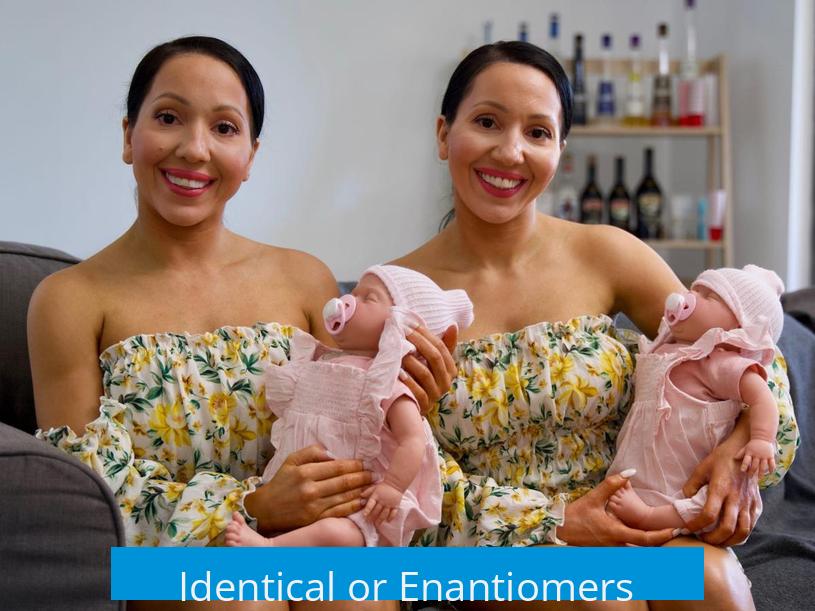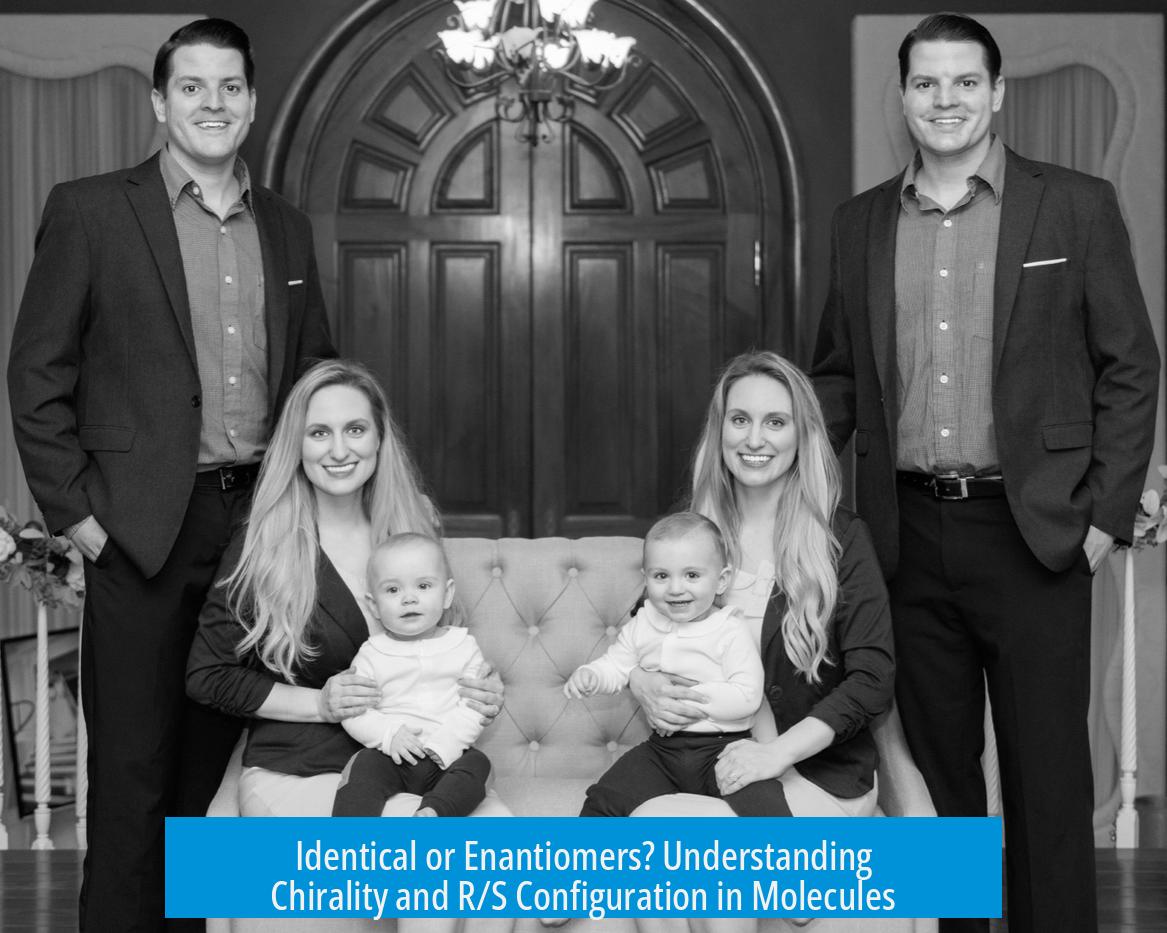Identical or Enantiomers?

Determining whether two molecules are identical or enantiomers depends mainly on analyzing the chiral centers and their configurations. When groups attached to a chiral carbon are swapped, the parity of swaps signals identity: an even number of swaps yields identical molecules, while an odd number results in enantiomers.
Understanding Group Switching at a Chiral Carbon

At a chiral center, swapping attached groups changes the molecule’s stereochemistry. For example:
- Two swaps (even number) produce the original molecule, meaning they are identical.
- One swap (odd number) leads to the mirror image or the enantiomer.
This approach works well for simple chiral centers but can be complicated for multiple stereocenters.
Role of R/S Configuration in Distinguishing Molecules
Assigning R or S configuration to each chiral center is the most reliable method. The process involves:
- Determining the priority of groups using the Cahn-Ingold-Prelog rules.
- Assigning R (clockwise) or S (counterclockwise) based on group arrangement.
If two molecules share the same configuration (all R or all S), they are identical. Conversely, if all stereocenters have opposite configurations, the molecules are enantiomers. Partial matches indicate diastereomers.
Practical Tips for Assigning Chirality
When assigning R or S, it is crucial to position the lowest-priority substituent away from the viewer. For example, when the ethyl group is the lowest priority, it must be oriented furthest to correctly interpret the configuration. Rotations around single bonds often clarify the actual configuration without changing the molecule’s identity.
Rotation around single bonds allows visualization of different conformations such as s-cis or s-trans, helping distinguish identical molecules from stereoisomers.
Summary Table: Identical vs. Enantiomers
| Property | Identical Molecules | Enantiomers |
|---|---|---|
| Group Swapping | Even number of swaps to get same molecule | Odd number of swaps changes configuration |
| R/S Configuration | All chiral centers identical (all R or all S) | All chiral centers opposite (all R vs. all S) |
| Stereocenters | Match exactly | Mirror images, no superposition |
| Rotation | Rotation around single bonds can show similarity | Cannot be made identical by rotation |
Key Takeaways
- Switching groups at a chiral center: even swaps = identical; odd swaps = enantiomers.
- Assign R/S configurations to avoid guesswork; identical molecules share the same configuration.
- Multiple stereocenters require analysis of all centers for full identification.
- Rotations around single bonds (like s-cis/s-trans) assist in visualizing molecular identity but do not change chirality.
What determines if two molecules are identical or enantiomers by switching groups on a chiral carbon?
If switching attached groups an odd number of times leads to one molecule, they are enantiomers. If the number of switches is even, the molecules are identical. For example, two switches bring you back to the same molecule, so they are identical.
How can R/S configurations help distinguish identical molecules from enantiomers?
Calculate the R/S configurations of chiral centers. If both are R or both are S, the molecules are identical. If they have opposite configurations, they are enantiomers. This method also applies to multiple stereocenters.
What if molecules have multiple stereocenters with mixed configurations?
If all stereocenters are opposite, the molecules are enantiomers. If all are the same, they are identical. Mixed matching means the molecules are diastereomers, neither identical nor enantiomers.
How should priority groups be oriented when assigning R/S configuration?
Always orient the lowest priority group, such as an ethyl group, farthest from you. If the lowest priority points toward you, rotate mentally to place it away. This ensures correct clockwise or counterclockwise assessment for R or S.
Can rotating single bonds confirm if two molecules are identical?
Yes. Rotating about single bonds like C-C can convert one conformation to another. For example, s-cis and s-trans forms interconvert by bond rotation, revealing identical structures in different drawings.





Leave a Comment